9 Indian Board Games You Should Know
Indian board games are a complex cultural manifestation that takes inspiration from many scientific and artistic disciplines: from mathematics in rules and board design, through painting in decoration to sculpture in pieces or boards. They exist at a level impervious to religion or politics and represent a free means of communication between people that nothing can successfully interrupt – one of the great unifiers of syncretic Indian civilisation. Let’s look at nine surprisingly Indian board games.
This is going to be a long one – you’ve been warned!
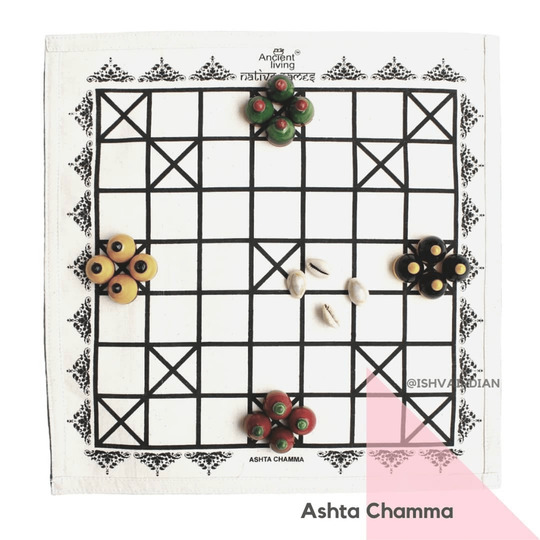
Ashta Chamma or Chowka Bhara – one of the oldest board games extant, still being played in certain parts of India, albeit with different names. There are references of this game in some ancient Indian epics like the Mahabharata (not to be confused with Chausar though!) This game is an example of a “fully observable” system that has an element of chance introduced by the roll of special dice and an element of strategy – the strategy being the counter the player decides to move after the dice are rolled. While traditionally played with 4 or 6 cowrie shells, dice can also be used. Each player starts with four counters in the outermost squares marked with a cross. The counters are moved the numbers of squares determined by a roll of the dice. Each counter must pass through all of the other squares on the board and finish at the centre square
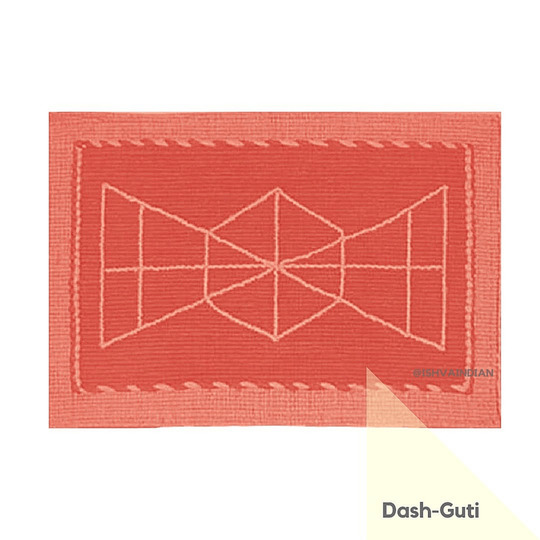
If you ever visit Varanasi and look hard enough, you may find a game of Lau Kata Kati or Dash-Guti etched on a platform at Sheetla Ghat! Lau (or Nau) Kata Kati is a two-player abstract strategy board ‘war’-game native to India. It is related to Draughts and even more so to Alquerque – pieces are captured by leaping over them. Dash-Guti is similar to Lau Kata Kati, but with the addition of two line segments connected to the vertex (one on each side) but exterior to both triangles.
Each player has 9 (or 10) pieces. Players alternate their turns using one piece to either move or capture exclusively per turn. If a player captures all of their opponent’s pieces, we have a winner. If neither player can capture any more pieces, the player with more pieces wins. If a player cannot perform a move or a capture because its pieces have been blocked or immobilized, the other player wins. Lau Kata Kati is a great game for honing one’s strategizing and decision-making skills. The board game makes a great executive desktop trinket that can stimulate creativity, challenge the mind, or rattle the nerves!

Pallanguzhi is a traditional ancient Indian mancala game originating in South India. Variants include Ali guli mane in Kannada, Vamana guntalu in Telugu, and Kuzhipara in Malayalam. This game is probably as old as civilisation itself – Pallanguzhi inscriptions dating back to the stone age have been discovered in Pannamparai village of Tamil Nadu! The game also travelled to south-east Asia – Indonesians called it Congkak and Filipinos called the game Sungka which is a corruption of Sankya (Numbers in Sanskrit), and further on to Madagascar where it was known as Mancala. A fascinating account of how the ancients took their board games to wherever they went!
Pallanguzhi is played on a board with 2 rows and 7 columns. There are a total of 14 cups (kuzhi in Tamil language) and 146 counters. For the counters in the game, seeds, shells, small stones are all commonly used.
As the game proceeds, each player distributes the shells over all the pits. The players may capture the shells, as permitted by the rules of the game. The rules of capture depend on the variant of the game played. The game ends when one of the players captures all the shells and is declared the winner.
When people say that Chess was invented in India, they are not exactly talking about the game we play today, with its powerful queens and striding bishops. The chess invented in India, called Chaturanga, while recognisable as a kind of chess, was way more complex! Chaturanga is a game of rare endgame complexity which, understandably, made it less than popular with classical-minded Victorians who were the first westerners to encounter it. Hence, the simplified version we call Chess today! Chaturanga means “four limbs”, or “four parts”, a poetic reference to the four divisions of the army as used in India in ancient times: the infantry, the chariots, the cavalry and the elephants. Add to these the raja and his vazir, and you have the six different types of pieces from the game of 2-player chaturanga. There is also a four-poster version called Chaturaji which we particularly like and is pictured here.
The four pieces are king, elephant, horse and boat (or ship in some sources). Unlike Chess, Chaturanga allows the player to remain on board even after their Rajah is lost. The game ends when a player captures two of their enemies’ Rajah pieces. It is worth noting that there is a true attraction in India for 4-player games. Also, ancient games are often seen as very cerebral, even boring abstract exercises in intellect that require massive commitment in order to be played well – might be just what we need today!

Need the thrill of a hunt while sitting across a game table in your living room? Aadu Pulli Attam is just that – a fight for supremacy between the hunter and the hunted ensues here! Aadu Puli aatam, or Goats and Tigers, is a strategic, two-player board game that originated in Tamil Nadu and is also played in Karnataka (Huli gatta) and Andhra Pradesh (Puli Joodam or Puli Meka). Some sources also say that the game originated in the Himalayas, where it is known as Bagh Chal. Whatever its antiquity, the game is still popular today, and a worthy Indian treasure! History has pointed to several pieces of evidence of this game being played in ancient temples across South India. For one, the local Tamils taught the Dutch how to play Aadu Pulli Attam – the grid used to play the game, comprising rectangles and triangles, was found engraved on a well-burnt brick by the ASI .
The game is asymmetric in that one player controls three tigers and the other player controls up to 15 goats. The tigers ‘hunt’ the goats while the goats attempt to block the tigers’ movements. The show of strength is based on whether the herd of goats manage to vanquish the tigers, or the tigers once again prove their place of pride in the jungle. Game ends when either tiger takes out more than 6 goats or goats manage to immobilise all tigers.

We all love a thrilling one-track race game! Not much is known about the origins or transmission of Panchi, but then ancient Indians didn’t exactly love putting things on paper – word of mouth is a great way to embed things in the very DNA, which in this case seems to have worked! Panchi / Vimana / Kuranakattam has been played in southern India for generations; the game is part of a long list of single-track race games that birthed the current ‘Ludo’ – more on that colonial scam when we cover Pachisi!
Very similar to other track racing games – one board, two sets of five pieces and a throw of dice or cowrie shells. The first player to bear off all five pieces wins. The design of the track itself makes it fascinating and the analogy of vimana or panchi must have some historical or cultural context (perhaps the pushpaka vimana from Ramayana) – let us know in the comments if you know more!
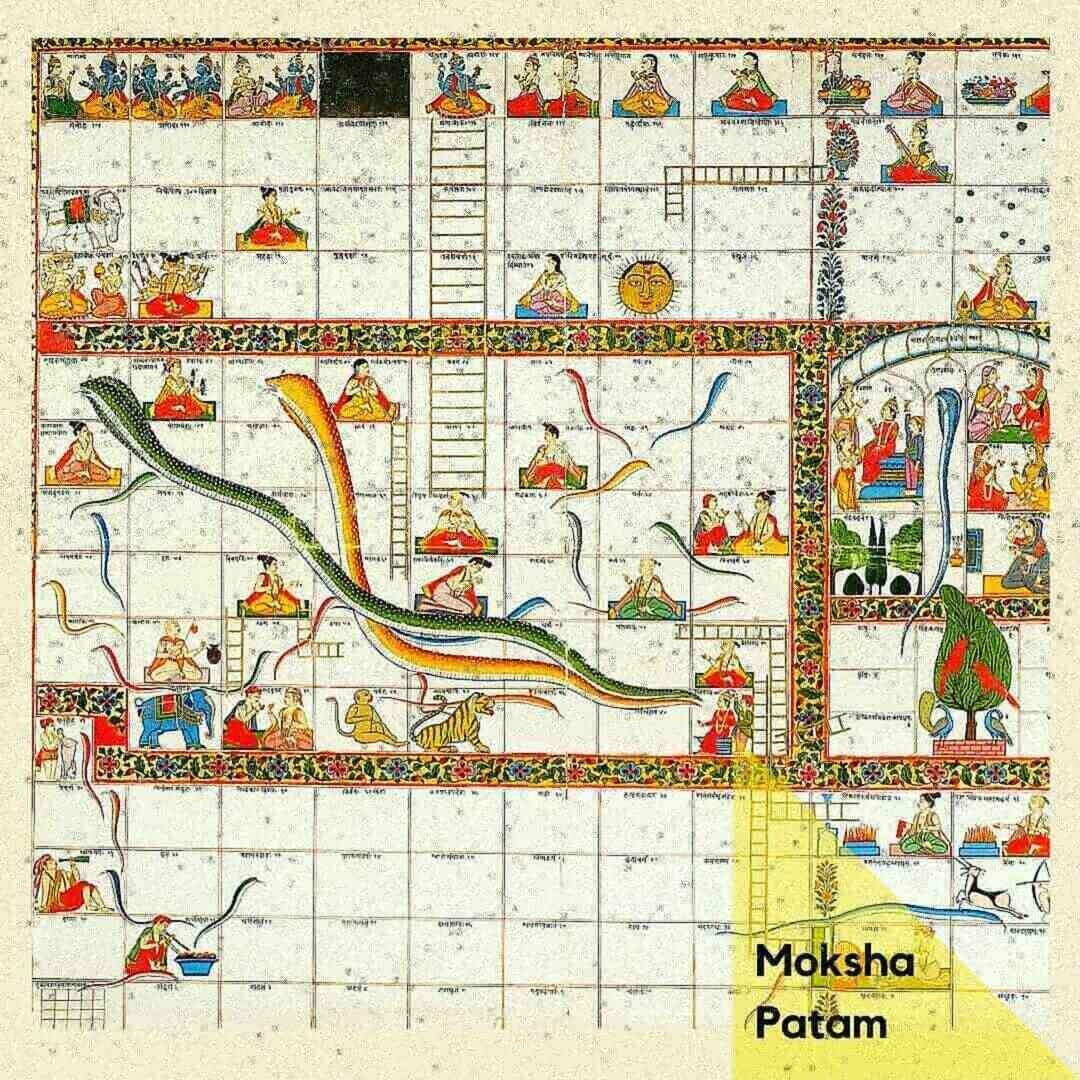
The Indian-born board game that’s a worldwide classic! Known famously today as Snakes & Ladders after the British took the game from India to England in 1892 and changed it according to Victorian values, Moksha Patam has a deeply spiritual significance in the Indian ethos. In the original game dating back to 2nd century C.E., the Ladder square 12 was faith, 51 was Reliability, 57 was Generosity, 76 was Knowledge, and 78 was Asceticism. On the other hand, the Snake square 41 depicted Disobedience, 44 for Arrogance, 49 for Vulgarity, 52 for Theft, 58 for Lying, 62 for Drunkenness, 69 for Debt, 84 for Anger, 92 for Greed, 95 for Pride, 73 for Murder and 99 for Lust. Square 100 represented Nirvana or Moksha. And the game – Moksha Patam, or the path to Moksha, how beautiful!
Other versions such as Paramapadam or VaikunthaPali take players through the various karmas and samskaras, good deeds and bad, up and down the board. Interspersed are plants, people and animals. The final goal leads to Vaikuntha or heaven, depicted by Vishnu surrounded by his devotees, or Kailasa with Shiva, Parvati, Ganesha and Skanda, and their devotees. Quite sadly for most Indians today, Snakes & Ladders is just another game where you win or lose with the roll of a dice and there’s no lesson in morality or ethics involved.
Featured Board: Moksha Patam from Nagpur, 1800. Courtesy Royal Asiatic Society
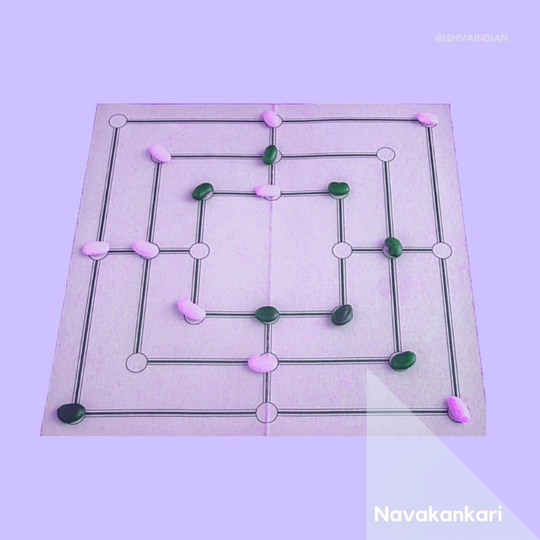
Known as Nine Men’s Morris or Mills in the western world, Navakankari comes from the Sanskrit word meaning ‘nine pebbles’. It is also known as Saalu Mane Ata, Navkakri, Naukhade, Daadi, Char-Bhar, depending on the region and language. Navakankari is a solved game, that is, a game whose optimal strategy has been calculated. With perfect play from both players, the game results in a draw – you play well, you both win! This board game has been found etched in the Bhaja caves of Maharasthra (2nd century C.E.), Chennakesva temple, Gedera in Israel, and even Mycenae and Marathon in ancient Greece. Did the game come to India via the Indo-Roman trade route? Possibly yes.
NavaKankari is played on a board consisting of three concentric squares connected by lines from the middle of each inner square. There are 24 playable points between two players and each player gets 9 coins of a different colour. The basic aim is to make ‘Mills’ – vertical or horizontal lines of three coins of the same colour. Every time this is achieved, an opponent’s piece is removed, the overall objective is to reduce the opponent’s coins to ‘two’ or to block all moves and render the opponent unplayable. And voila, we have a winner!
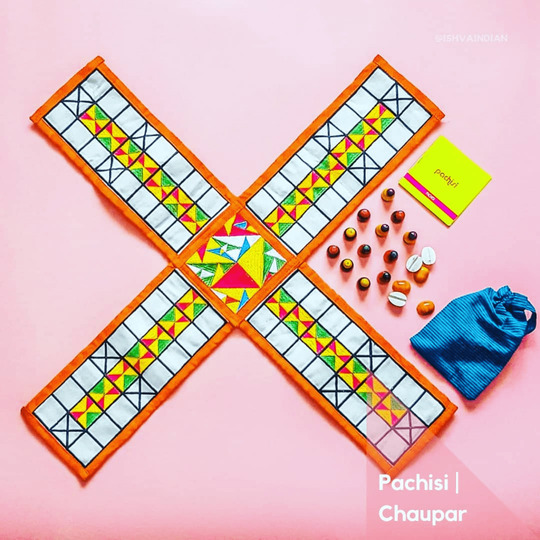
Presenting the OG ancestor of the present-day pretender that is Ludo! Believed to be one of the oldest games in the world, Chaupar is said to have undone many a man in its time. Known by many names and forms – Pachisi in North India, Thayakattam in Tamil Nadu and Pagade in Karnataka, the game is also known to have been played in the Indus Valley in 2,300 BCE as is attested by the oblong dice that have been recovered from its sites.
The word ‘chaupar’ literally means ‘that which is composed of four boards’. Pachisi was called “the poor man’s Chaupar”. This partly, because cowries (the playing pieces in Pachisi) were used as currency by the poorer Indian classes and partly because Chaupar is a more complex game and therefore regarded as more aristocratic. Pachisi later gave rise to many other games like Ludo, Parcheesi, Sorry!, Aggravation or Trouble. LUDO in fact, is highly simplified version of Pachisi.
Here’s a story about Ludo you should know: On August 29, 1981, Alfred Collier applied for a patent in Englad, claiming that a board game, which he named Royal Ludo, was his invention. The patent was approved a few months later, and granted him full commercial rights and barred others from replicating the game. Since then, ‘Collier Ludo boards’ were sold across the world with the patent number inscribed on them.Just another Indian invention that got appropriated and sold back to Indians.
Board games have been part of India since antiquity. Along the way, some truly remarkable games were invented, and are in play even today. Discover, get playing, share, inspire others, and most importantly, if you’re reading this in Lockdown, stay indoors and have fun!
